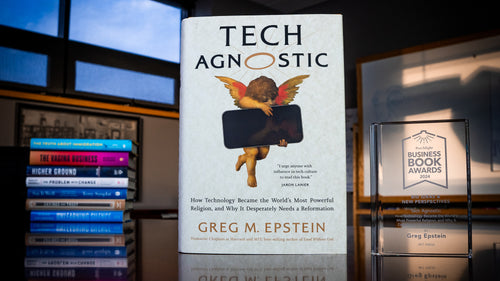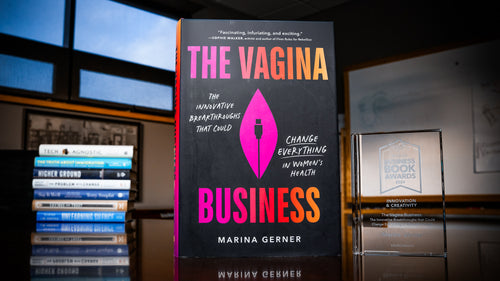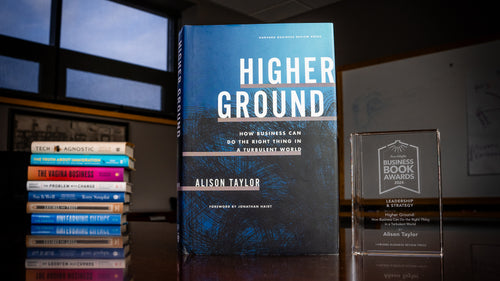Burn: Using Fire to Cool the Earth

I mentioned in my review of Albert Bates and Kathleen Draper's Burn: Using Fire to Cool the Earth that I was hoping to cover the book further. I haven't been able to put any more of my own words to that task as of yet, but our friends at Chelsea Green have been good enough to send a few excerpt options that allow us to do so.
If you're unfamiliar with the book, it is about how, if we want to save ourselves from the results of catastrophic climate change, we must "reverse the flow of greenhouse gases and send them in exactly the opposite direction: down, not up." One of the best ways to do that, one that's shovel ready and full of sustainable business opportunities, is through practices that move carbon from currently wasted sources like agricultural and forestry byproducts, and even food waste and sewage treatment—and putting them to good use. The cleaner sources of carbon we can "sink" back into the earth to replenish impoverished soil, and the more contaminated can be incorporated into the building materials (like concrete and asphalt) that build the nation's infrastructure, like our highways and high rises. The first step is how we process that material, which brings us to biochar.
A secret unlocked by the ancients of the Amazon for its ability to transform impoverished tropical soils into terra preta—fertile black earths—points the way. The indigenous custom of converting organic materials into long lasting carbon has enjoyed a reawakening in recent decades as the quest for more sustainable farming methods has grown. Yet the benefits of this carbonized material, now called biochar, extend far beyond the soil.
They gave us a few options for this excerpt, ranging from infrastructure to agricultural projects, and while I am intensely interested in infrastructure, my family history leads me to the farm. My mother was raised up on a farm, and has worked for a farmer's cooperative in a tiny little Wisconsin town for over thirty years—eventually working her way up to become branch manager. Some of my formative years, around the time I entered kindergarten, were spent on a dairy farm just up the road from where she still works. My wife grew up on a farm outside of "Soy City"—Decatur, Illinois—in a house her grandfather built by hand. Before the car accident that ended his life too early, that grandfather had opened and operated a grain elevator with his brother on the city's edge that is still in operation today, though it looks rather quaint—as if it's of another era—when compared to the sprawling industrial complexes of Archer Daniel Midland and A.E. Staley near downtown.
The reason I tell you all this here is that corporate names like Monsanto, ADM, and Staley actually come up in conversations when I ask my mother about work (traditional farming being dominated by the likes of Monsanto), or when we visit family in Decatur—a city often defined by the smell of the soy and corn crops being processed by ADM and Staley. So when I come across ways to do things differently, a way to do business more sustainably with potential for bottom-up growth and renewal, that gives farmers more agency and control, it feels like a monumental, even generational, shift.
And that led me to choose the fourth excerpt option they gave us, from Chapter 9, "Cattle Carbs and Leafy Greenbacks," explaining the role biochar has to play in Animal Nutraceuticals, which has implications for everything from replenishing the soil to escaping the overbearing influence of Big Pharma in our food supply chain, and why…
◊◊◊◊◊
One of the most promising biochar markets is animal feed. Compared with the fertilizer market, the global animal feed market is enormous, and unlike the soil amendment market, is not seasonal: It weighs in at $325 billion and is expected to grow 4.6 percent per year through 2024. The animal feed–additives market is forecast to top $30 billion by 2025, just part of the larger $65 billion animal-health market that includes diagnostics, vaccines, and drugs.1
In one experiment, lactating goats received either bentonite clay or charcoal at 1 percent of a feed ration, slightly contaminated with aflatoxin, a sometimes lethal mold. After two weeks, toxic content in their milk had dropped 65.26 percent for the bentonite and 76 percent for the charcoal, without causing any change in the milk’s nutrient composition.2 A similar experiment with cows’ milk showed reductions of 36 percent and 50 percent respectively. Mycotoxins most commonly reside on corn and cottonseed, but may also be found on soybean and distillers’ grain. When consumed by livestock, some toxins can carry over into eggs, milk, and meat. High or long-term exposure can lead to health issues in humans. In the United States alone, the economic impact of aflatoxins on dairy is estimated to exceed $200 million per year. The potential for economic loss and liability for farmers is enormous.
Despite all these benefits, the use of plant-derived charcoal is not currently permitted as a feed additive in the United States for livestock expected to enter the human food chain; it’s okay for cats but not cows. Researchers and biochar producers in Europe have been more fortunate. They’ve demonstrated multiple health and economic benefits to hogs, hens, and Holsteins and have won regulatory approval. Feeding charcoal to ailing animals is not a new idea. Even wild animals have been observed consuming it. Adding biochar to daily feed rations is relatively new, however.
To Big Pharma, biochar is a Big Threat. In 2015, American Addiction Centers warned:
With those pockets comes a strong hand of political and legislative influence, to the tune of $2.9 billion between 1998 and 2014 on lobbying expenses, and $15 billion in campaign contributions between 2013 and 2014. For some people, this straddles the line between unethical and illegal. Even as the federal government issues massive fines to keep those companies in check, the industry itself is a significant contributor to the Food and Drug Administration’s budget, leading to concerns of conflicts of interest and outright bribery.3
In 2014, ProPublica revealed the amount of money that US pharmaceutical companies have agreed to pay the US Department of Justice in fines and penalties for fraudulent market practices, such as promoting medications for uses that violate the federally approved standards. It exceeds $13 billion. Still, these companies recoup those losses in a matter of weeks. Even as they admit culpability and promise reform, none of that news makes it into television advertising, which accounts for 61.6 percent of companies’ direct-to-consumer revenue. Marketing blitzes and millions of dollars thrown at prime-time commercial spots ensure they can keep therapeutic carbon off the shelves and out of the cattle shed if they so choose.
The global medication market was worth $1 trillion in 2014. Ten of the world’s top pharmaceutical companies are projected to earn $20 billion from animal drug lines in 2018. They would most likely prefer not to have nutriceutical biochar (which can be locally produced) slicing into that pie.
Australian Doug Pow began feeding biochar to his pasture-raised herd five years ago to see if it might improve the quality of soil and hay from his pastures.4
Biochar sweetened with molasses ( kilogram or ¾ pound per day per animal) passed through the cows’ rumens and landed atop the sunbaked soils of Pow’s ranch. Dung beetles feasted on the carbon-rich excrement and helped convey it down through the soil profile as deep as 40 centimeters (16 inches). The combination of bovines and beetles gave Pow a no-cost delivery mechanism that has bettered the health of both cows and pasture. His pasture productivity went up 25 percent over three years. Everything improved across the board: carbon, oxygen, nitrogen, magnesium, calcium, potassium, silicon, sulfur. Many of his neighbors who gawked and jeered from the fence line are now following suit.
Stephen Joseph, a university professor who was dispatched to study Pow’s farming practices for the government, calculated that Pow paid $0.06 per day for materials and $0.05 per day for labor to make his adjustments for the entire herd. He saved $1.10 per cow per day in hay costs and between $5,210 and $6,630 in fertilizer his fields no longer required. His soil carbon in his worst paddock went from 34 ppm to 86 ppm. With total expenses of $1,000, including labor, spread out over the course of three years, Pow produced an income of $49,500, compared with $12,250 per year under the previous system. And that was just in the first three years. The carbon keeps coming.
Pow is not only a cattle farmer; he also grows avocados. (He founded the avocado industry in Western Australia.) Avocados are a crop that needs irrigation and good soil. They have a low salt tolerance and a high requirement of oxygen and boron in the soil. Pow has eight hundred trees, the newer ones planted on tilled topsoil mixed with biochar.
“Avocado trees come from a volcanic andosol, extremely new soil derived from volcanic ash, different from any soil in the world,” he said. “We are trying to chemically get the soil similar to that which they evolved in, and biochar assists that.”
Recently Pow secured funding from the South West Catchments Council to measure how the avocado trees’ growth was affected by biochar. To get precise measurements, he peeled back 1 foot (30 cm) of topsoil straight off the surface with a road grader, then came back and deep-ripped and rotary-hoed another foot. The removed topsoil was blended with 24 tons of biochar at different rates—0, 5, 10, 20 percent—and graded back in rows. He planted his young trees on the soft soil and watered them equally.
“Everyone who comes to see this won’t plant an avocado tree without biochar now—the difference is that convincing,” he says. At 5 percent biochar the leaf area has doubled. The amount of chloride the trees take on from irrigation water is down 23 percent, and much less irrigation is needed. The new trees have better stem diameter and more flowers.
“We are trying to set up an even, natural system. They are huge trees; some will set 300–400 fruit a year when they are four years old. If every tree did that, that would be twenty-five tons per hectare and that’s $150,000 a hectare. . . . Biochar is not expensive and it’s not like a fertilizer that is gone each year, it’s in there for thousands of years.”5
1, PR Newswire, “Animal Health Market Size, Share and Trends Analysis Report by Animal Type,” August 10, 2018.
2. S.B. Nageswara Rao and R.C. Chopra, “Influence of Sodium Bentonite and Activated Charcoal on Aflatoxin M1 Excretion in Milk of Goats,” Small Ruminant Research 41, no. 3 (2001): 203-213, http://doi.org/10.1016/S0921-4488(01)00216-4.
3. Desert Hope, “Who Are the Players in the Pharmaceutical Industry (Big Pharma)?” https://deserthopetreatment.com/big-pharma.
4. Stephen Joseph et al., “Feeding Biochar to Cows: An Innovative Solution for Improving Soil Fertility and Farm Productivity,” Pedosphere 25, no. 5 (2015).
5. Laura Celenza, Whole-Farm Biochar Systems Boost Productivity, Stores Carbon, Cuts Inputs and Emissions (Floreat, Australia: Western Australia No Tillage Farmers Association, 2016), http://www.wantfa.com.au/wp-content/uploads/2016/04/WANTFA_NF_Summer2015_Biochar-002.pdf.
Excerpted from Burn: Using Fire to Cool the Earth by Albert Bates & Kathleen Draper.
Published by Chelsea Green Publishing.
Copyright © 2018 by Albert Bates and Kathleen Draper.
All rights reserved.
ABOUT THE AUTHORS
Albert Bates is one of the founders of the intentional community and ecovillage movements. A lawyer, scientist, and teacher, he has taught village design, appropriate technology, and permaculture to students from more than sixty countries. His books include The Biochar Solution and The Paris Agreement.
Kathleen Draper has been deeply involved in many areas of biochar research, communication, and outreach for the past six years. She routinely collaborates with biochar experts from around the globe as a board member of the International Biochar Initiative (IBI), moderator for IBI's biochar education webinar series, and the US Director of the Ithaka Institute for Carbon Intelligence. She has lectured on biochar in several countries and provides consulting services to companies entering the biochar industry. She is editor of the online review, The Biochar Journal.



